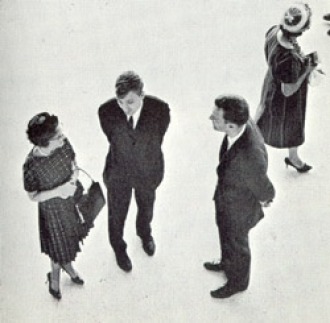Proxemics
Proxemics is a recent terminology (1966, E. Hall) that is part of non-verbal communication, defining that in daily life, the distance between people runs in parallel with their interpersonal relationships. It establishes four different spheres of relationships (each subdivided into far/close): Intimate, personal, social and public, which respective distance span may vary from one culture to the other.
there are four types of “distance” which people use to communicate on a face-to-face basis.
These include:
· Intimate distance (0-1.5 ft.)
· Personal distance (1.5-4ft.)
· Social distance (4-12 ft.)
· Public distance (>12 ft.)
(Personal space: 2007)
Intimate distance is that which is used for very confidential communications. This zone of distance is characterized by 0 to 1.5 feet of space between two individuals. An example of intimate distance is two people hugging, holding hands, or standing side-by-side. People in intimate distance share a unique level of comfort with one another. Those who are not comfortable with someone who approaches them in the intimate zone will experience a great deal of social discomfort or awkwardness.
Personal distance is used for talking with family and close friends. Although it gives a person a little more space than intimate distance, it is still very close in proximity to that of intimacy, and may involve touching. Personal distance can range from 1.5 to 4 feet. Like intimate distance, if a stranger approaches someone in the personal zone, he or she is likely to feel uncomfortable being in such close proximity with the stranger.
Social distance is used in business transactions, meeting new people and interacting with groups of people. Social distance has a large range in the distance that it can incorporate. From 4 to 12 feet, it is clear that social distance depends on the situation. Social distance may be used among students, co-workers, or acquaintances. Generally, people within social distance do not engage in physical contact with one another.
People may be very particular about the amount of social distance that is preferred. Some people may require much more physical distance than others. Many times, if a person comes too close to another individual, the individual is likely to back up and give himself the amount of space that he feels more comfortable in.
Public distance is measured at 12 or more feet between persons. An example of this is illustrated in the following picture, where two men sit far apart on a park bench, in order to preserve their public distance.
(Luthans and Doe: 2009; 201)
Each of the previous types of proximity are heavily influence by people's perception of what the "correct" type of distance should be in a certain situation.
Culture is one of the factors which contribute to people's perceptions of how proxemics should be used. People from different cultures have different views on what the proper personal space should be




